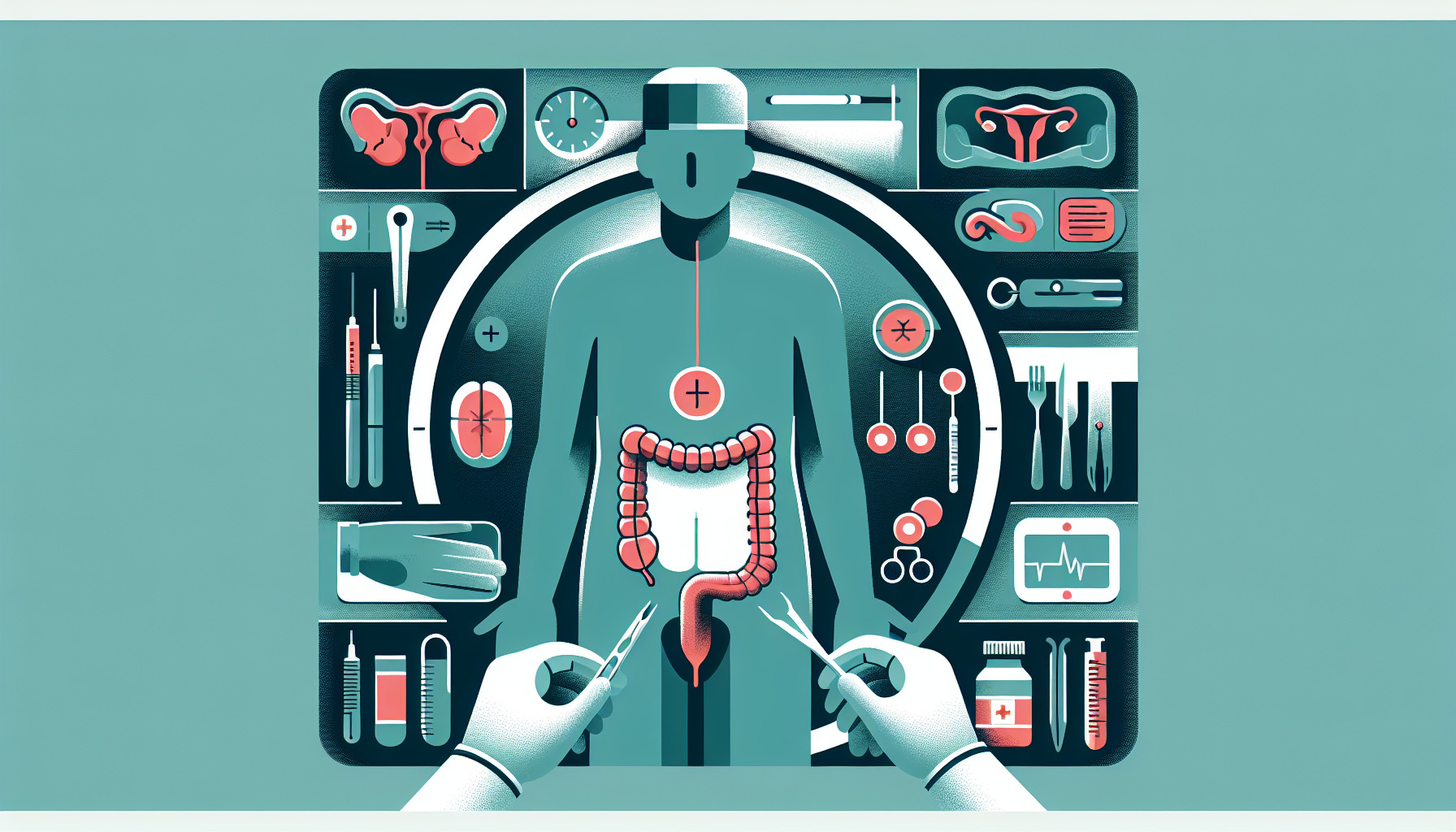Our Summary
This research paper is about a study on the use of Ligasure, a surgical tool, in the treatment of severe hemorrhoids. The study was conducted at the University Hospital of Tor Vergata, Rome, Italy, over a period of 13 years, and involved 1,000 patients aged between 19 and 80. The researchers looked at various aspects like the time taken for the surgery, post-surgery pain, complications after the surgery, time taken for the wound to heal and the time taken for the patients to return to their normal activities.
The results showed that out of the 1,000 patients, 110 were not available for follow-up after the first month post-surgery. Early complications after the surgery included urinary retention in 21 patients and minor bleeding in 3 patients. Late complications included anal fissure in 35 patients, incomplete healing in 11 patients, anal fistulas in 3 patients and perianal abscess in 4 patients. At the end of the seven years of follow-up, 70 recurrences and 35 cases of anal stenosis were detected.
The conclusion of the study is that if the surgical tool is used correctly and the technical guidelines are followed rigorously, late complications like impaired fecal continence, anal stricture and postoperative pain can be minimized.
FAQs
- What is the surgical tool Ligasure used for in the treatment of severe hemorrhoids?
- What were the early and late complications found in patients after the surgery?
- What was the conclusion of the study conducted at the University Hospital of Tor Vergata regarding the use of Ligasure in the treatment of severe hemorrhoids?
Doctor’s Tip
One helpful tip a doctor might tell a patient about hemorrhoidectomy is to follow post-operative care instructions carefully to minimize the risk of complications and ensure proper healing. This may include taking prescribed pain medication, keeping the area clean and dry, eating a high-fiber diet to prevent constipation, and avoiding heavy lifting or straining during the recovery period. It is also important to attend all follow-up appointments with your healthcare provider to monitor your progress and address any concerns promptly.
Suitable For
Hemorrhoidectomy is typically recommended for patients with severe hemorrhoids that do not respond to conservative treatments such as dietary changes, fiber supplements, and topical treatments. Patients who experience significant pain, bleeding, itching, and discomfort due to their hemorrhoids may benefit from a hemorrhoidectomy. Additionally, patients with large external hemorrhoids or internal hemorrhoids that have prolapsed may also be recommended for surgery.
It is important for patients to undergo a thorough evaluation by a healthcare provider to determine if they are suitable candidates for a hemorrhoidectomy. Factors such as the severity of symptoms, the size and location of the hemorrhoids, the patient’s overall health, and their willingness to undergo surgery will all be taken into consideration when determining if a hemorrhoidectomy is the best course of treatment.
Timeline
Before hemorrhoidectomy:
- Patient experiences symptoms of hemorrhoids such as itching, pain, swelling, and bleeding.
- Patient consults with a healthcare provider who diagnoses hemorrhoids and recommends conservative treatment options such as dietary changes, topical creams, and sitz baths.
- If conservative treatments are ineffective, the healthcare provider may recommend hemorrhoidectomy as a surgical option to remove the hemorrhoids.
After hemorrhoidectomy:
- Patient undergoes pre-operative tests and consultations to prepare for the surgery.
- Hemorrhoidectomy surgery is performed using a surgical tool such as Ligasure to remove the hemorrhoids.
- Patient may experience post-operative pain, urinary retention, minor bleeding, and other complications in the immediate aftermath of the surgery.
- Patient follows post-operative care instructions, including taking pain medication, maintaining proper hygiene, and avoiding straining during bowel movements.
- Patient attends follow-up appointments to monitor healing progress and address any complications that may arise.
- Patient gradually resumes normal activities as the wound heals, with full recovery typically taking several weeks to months.
- Long-term follow-up may be necessary to monitor for any recurrences or complications such as anal fissures, anal fistulas, and perianal abscesses.
What to Ask Your Doctor
What are the potential risks and complications associated with a hemorrhoidectomy using Ligasure?
How long will the surgery take and what is the expected recovery time?
Will I need to stay in the hospital after the procedure, and if so, for how long?
What kind of post-operative pain management will be provided?
How soon after the surgery can I expect to return to my normal activities?
What are the chances of recurrence of hemorrhoids after the surgery?
Are there any dietary or lifestyle changes I should make to help prevent future hemorrhoids?
How often will follow-up appointments be needed after the surgery?
What should I do if I experience any complications or unexpected symptoms after the surgery?
Are there any alternative treatments to consider besides a hemorrhoidectomy using Ligasure?
Reference
Authors: Milito G, Lisi G, Aronadio E, Campanelli M, Venditti D, Grande S, Grande M. Journal: Minerva Gastroenterol Dietol. 2017 Mar;63(1):44-49. doi: 10.23736/S1121-421X.16.02343-6. Epub 2016 Oct 21. PMID: 27768009
